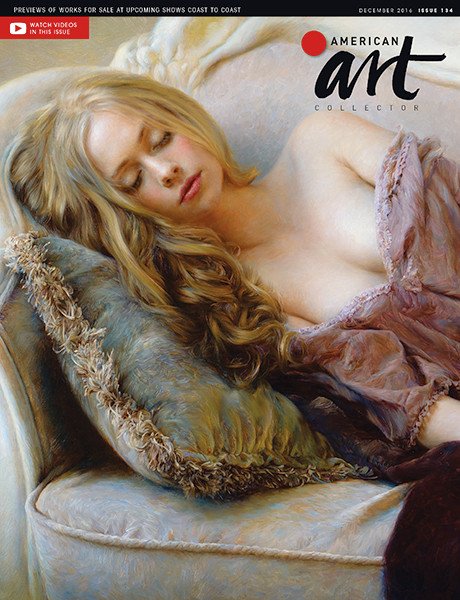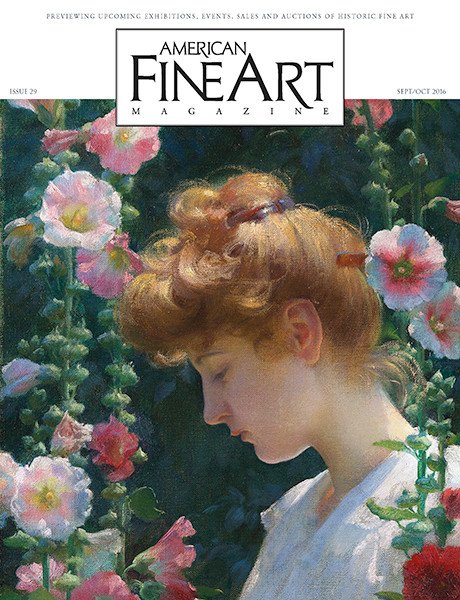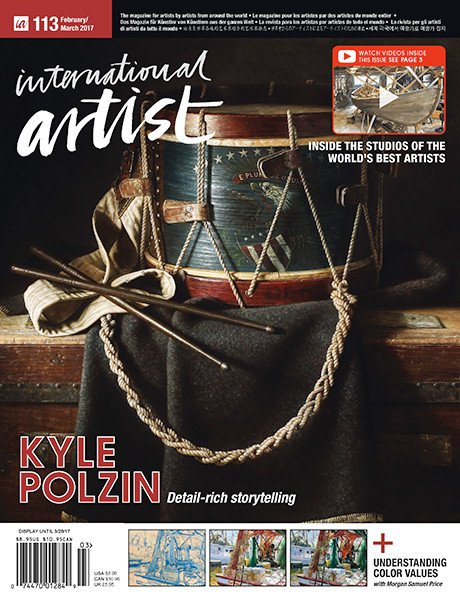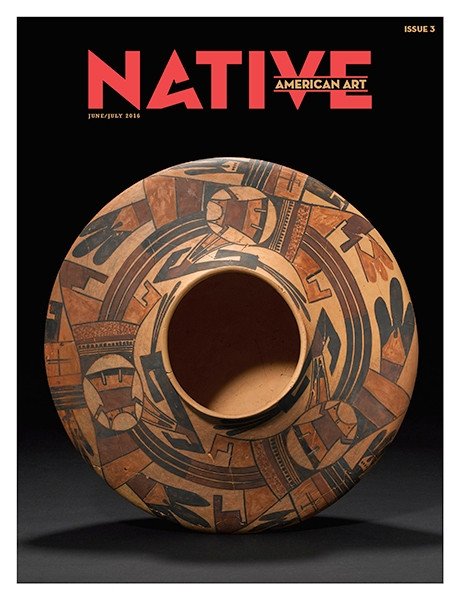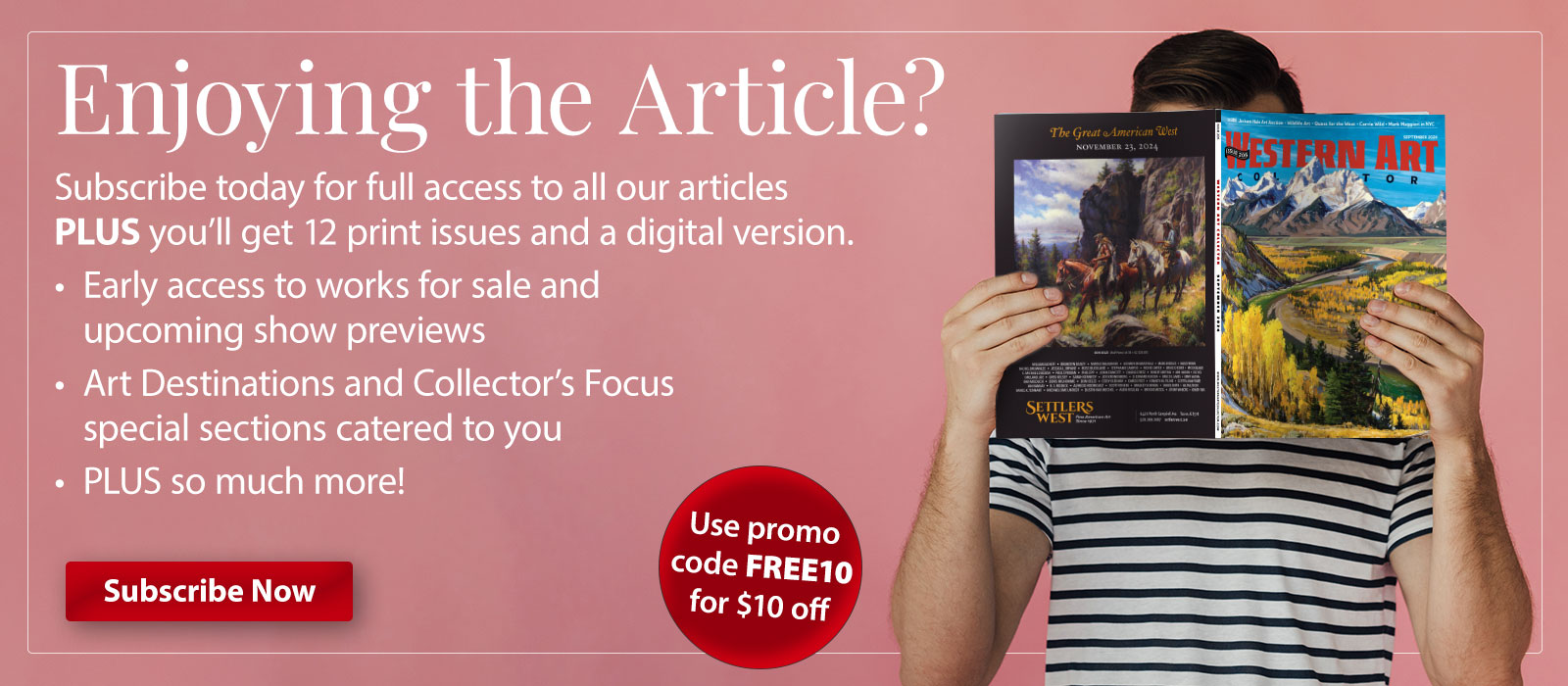Art very rarely springs out of nothing onto a canvas fully formed. There are numerous preliminary steps that occur long before paint is put to canvas. And even before that, an idea trickles into the artist’s mind, where it percolates and brews, until finally those early sketches or color studies can happen. Art simply takes time and many different steps to come into being.
The Booth Western Art Museum will explore this aspect of fine art with a unique new exhibition, Concept to Canvas: Six Contemporary Artists,opening October 25 in Cartersville, Georgia. The six artists are Jane Hunt, Michele Usibelli, Lori Putnam, Brent Cotton, Jay Moore and Randal Dutra. Not only will the museum exhibit finished easel paintings, three from each artist, but also preliminary paintings and sketches, color studies and photography related to the creation of each piece.
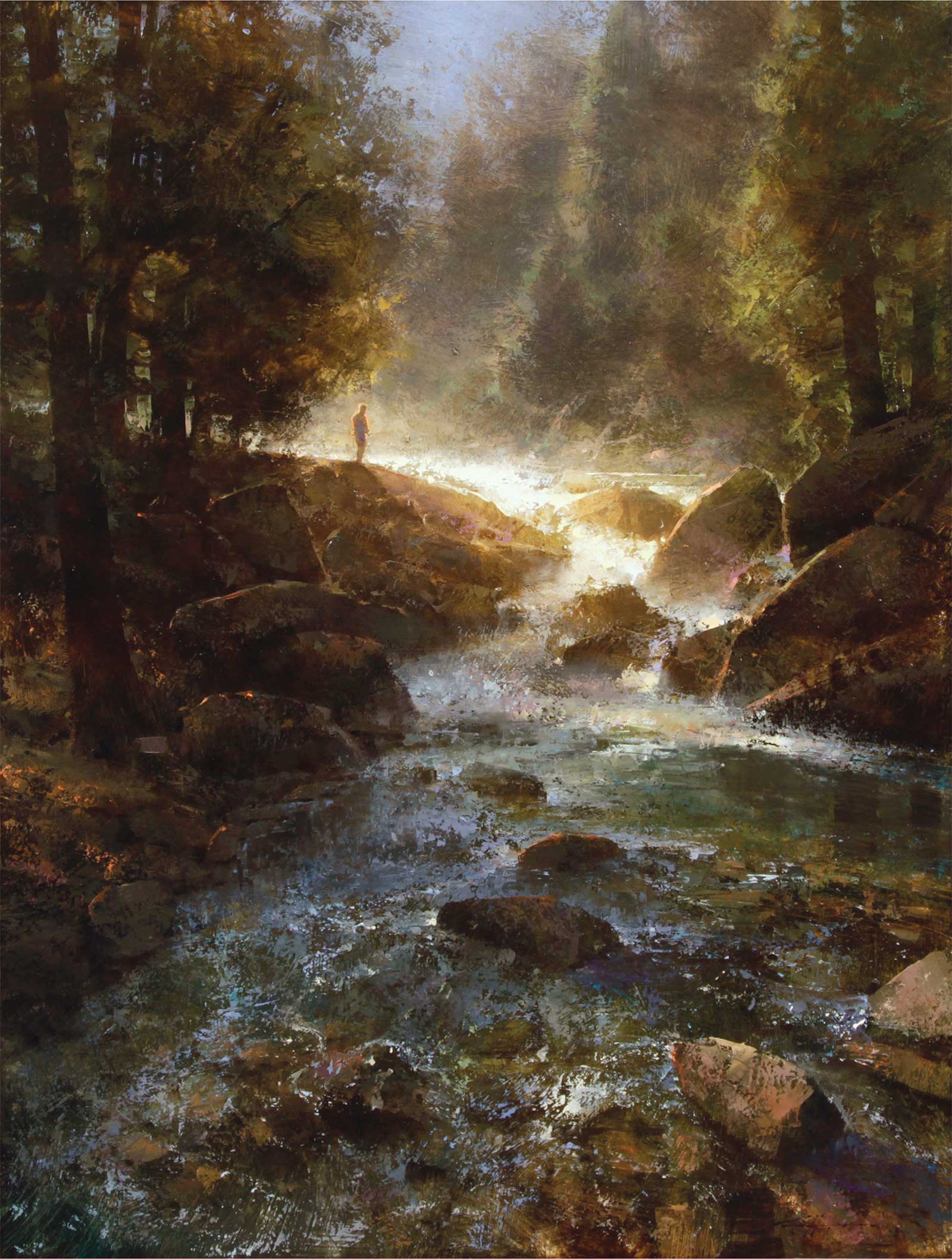
Brent Cotton, Along Kootenai Creek, oil on board, 24 x 18 in.
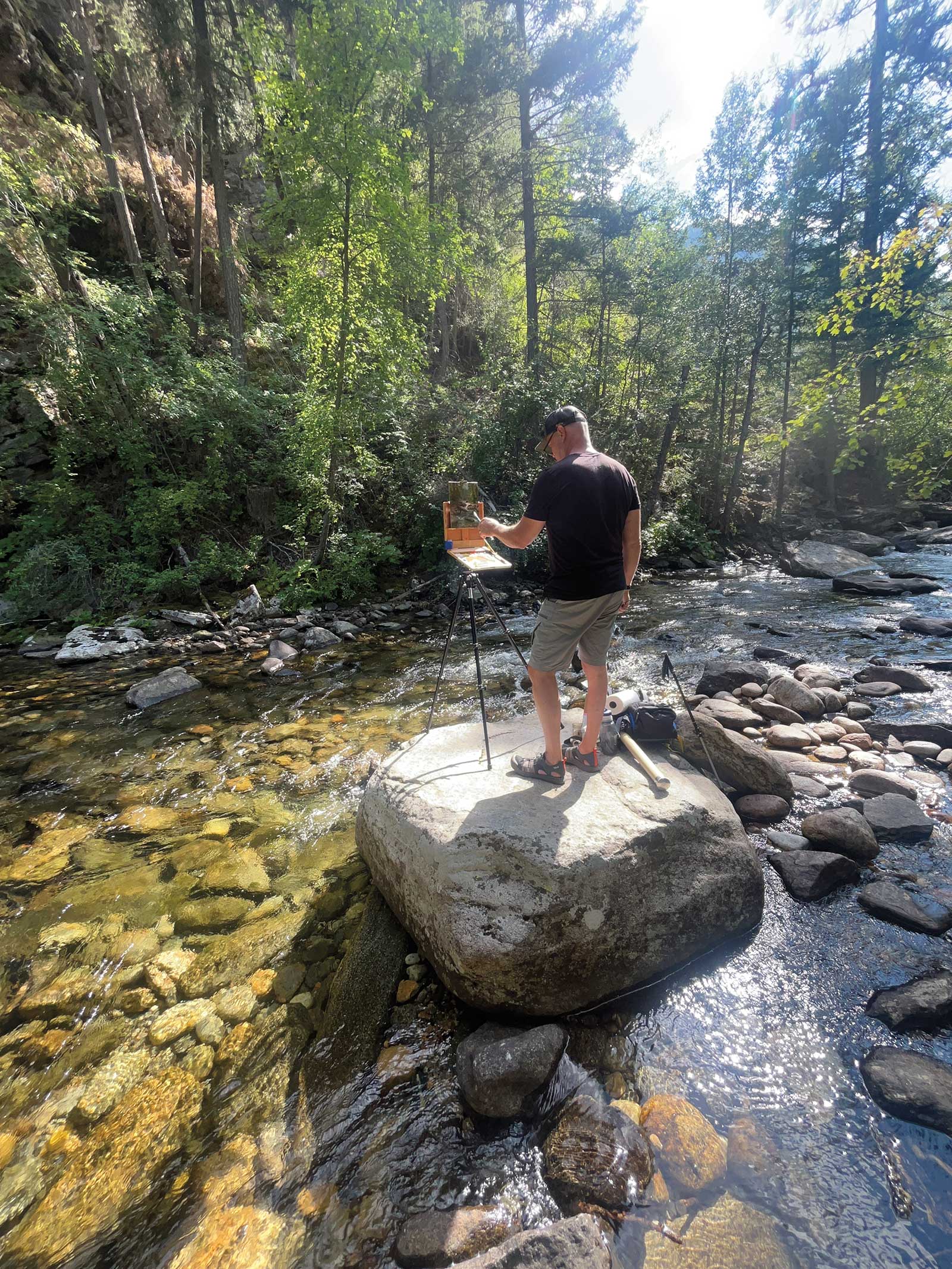 Brent Cotton at Kootenai Creek, Montana, during an outdoor painting session.
Brent Cotton at Kootenai Creek, Montana, during an outdoor painting session. “We often see beautiful works of art in museum exhibitions, but do you ever wonder what steps the artists go through to produce that painting?” says Lisa Wheeler, director of curatorial services at the Booth. “The concept behind this exhibition is to give our visitors an opportunity to see the steps involved in getting to that finished work of art.”
For Hunt, her process has changed since her art journey began. “I began my career as an illustrator, so my early work was very realistic, tight and centered on communicating a clear idea. Over time, I felt the need to break away from that training, which led me into very large-scale, abstracted representational pieces. That shift gave me permission to loosen up and explore paint more freely,” she says. “Today, I feel my process has settled somewhere in the middle—the work is representational, yet simplified and textured, with a strong emphasis on values and emotion. It’s a balance between structure and freedom that feels true to how I see and want to express the world.”
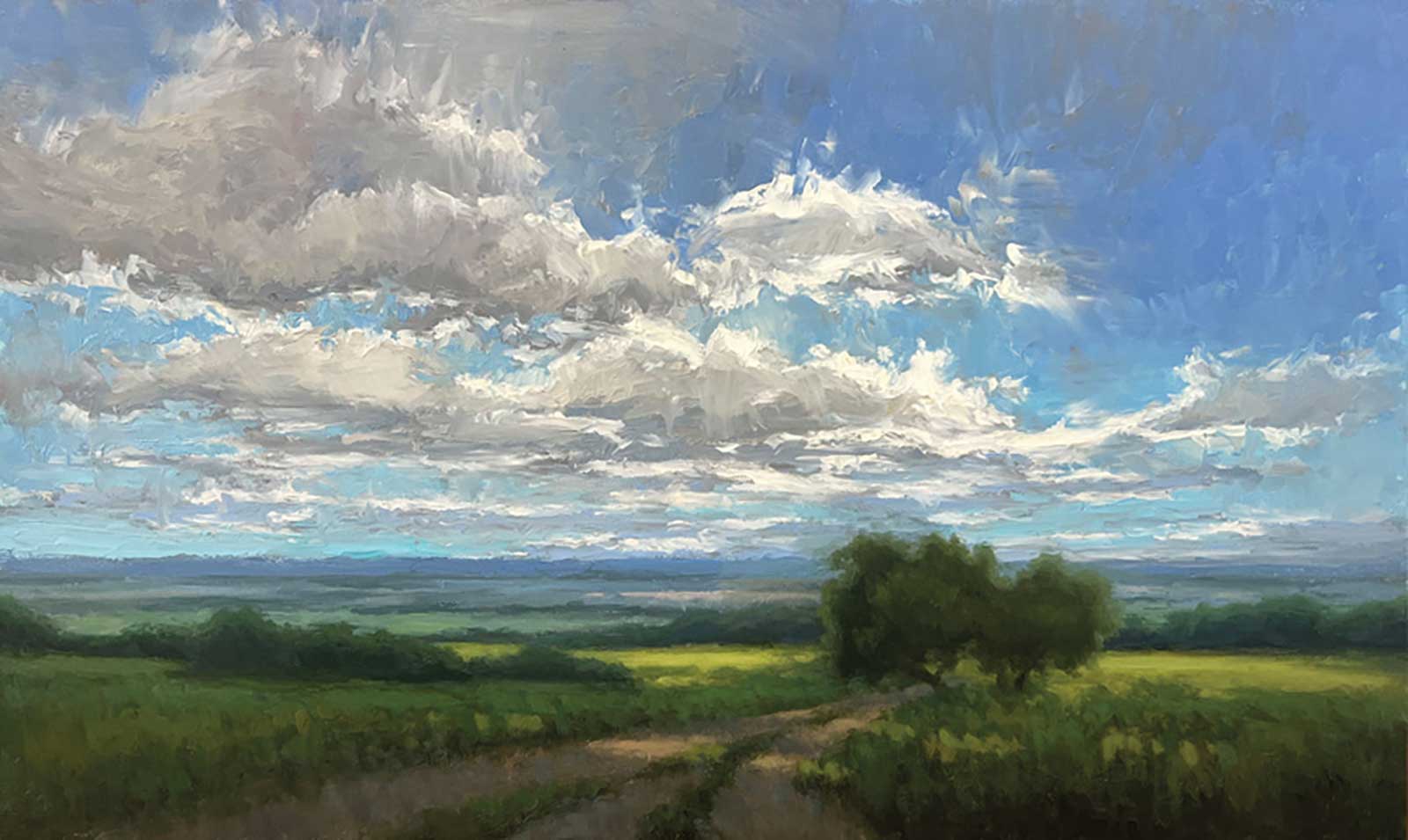
Jane Hunt, Lit From Above, oil on panel, 24 x 40 in.
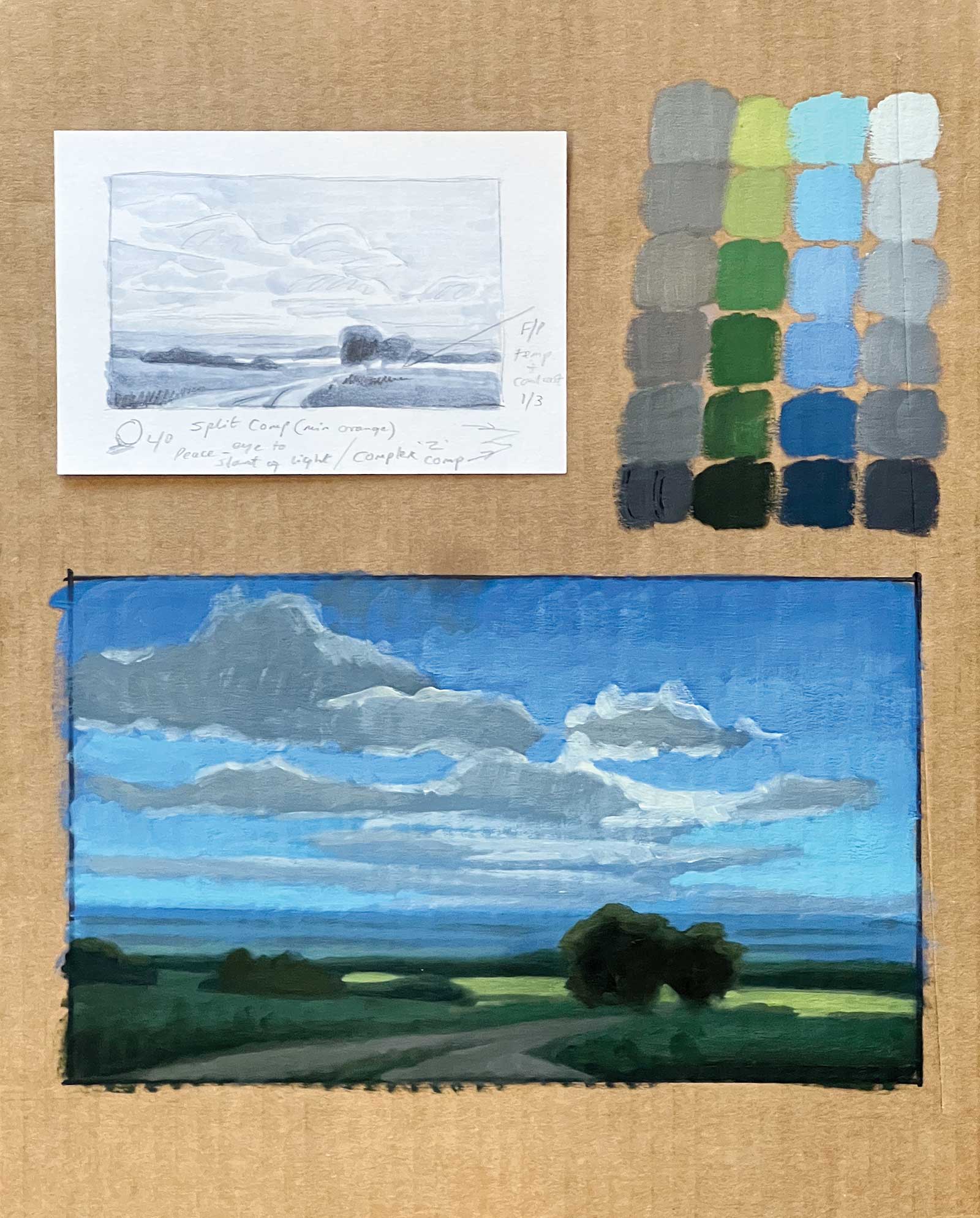 Jane Hunt, Lit from Above studies, oil on cardboard color sketches / marker on paper value study, 15 x 12 in.
Jane Hunt, Lit from Above studies, oil on cardboard color sketches / marker on paper value study, 15 x 12 in.For one of Hunt’s pieces, Lit From Above, she created a small sketch and then laid out all the colors in a grid for reference. These small steps inform the final canvas. “I usually have the painting worked out before I ever touch a brush. I spend as much time planning and sketching as I do on the final canvas. My process often begins with a four-value marker sketch and decisions about color harmonies,” Hunt says. “That groundwork gives me clarity and direction, and the more organized I am in the planning stage, the freer I can be once the painting begins. The structure allows me to loosen up, experiment with textures, and let the painting flow naturally.”
Like Hunt, Usibelli has allowed her process to change throughout her career. “I am an architect by training and when I first started painting, I knew in my mind how I wanted my paintings to look but had a hard time getting that message from my head to my canvas. All of the technical drawing and architectural rendering had me creating work that was much ‘tighter’ than I wanted to paint. My goal—and it continues to be my goal—is to loosen up in my paint application with a constant focus on saying ‘more with less,’ leaving elements out of a scene so the viewer can fill in their own story. I now place a lot of emphasis on brushwork and texture in my work, adding visual interest and entry to my paintings,” she says. “I discover my paintings long before I actually step up to the easel and begin applying paint. I am a very deliberate painter, sometimes ‘painting’ the piece in my head days before I actually start applying paint. I visualize the piece, the composition, what medium I want to use, temperature shifts, focal areas, values, color and edges long before I paint. I always have a plan prior to starting the actual painting. Of course, I always love it when happy mistakes happen, too.”
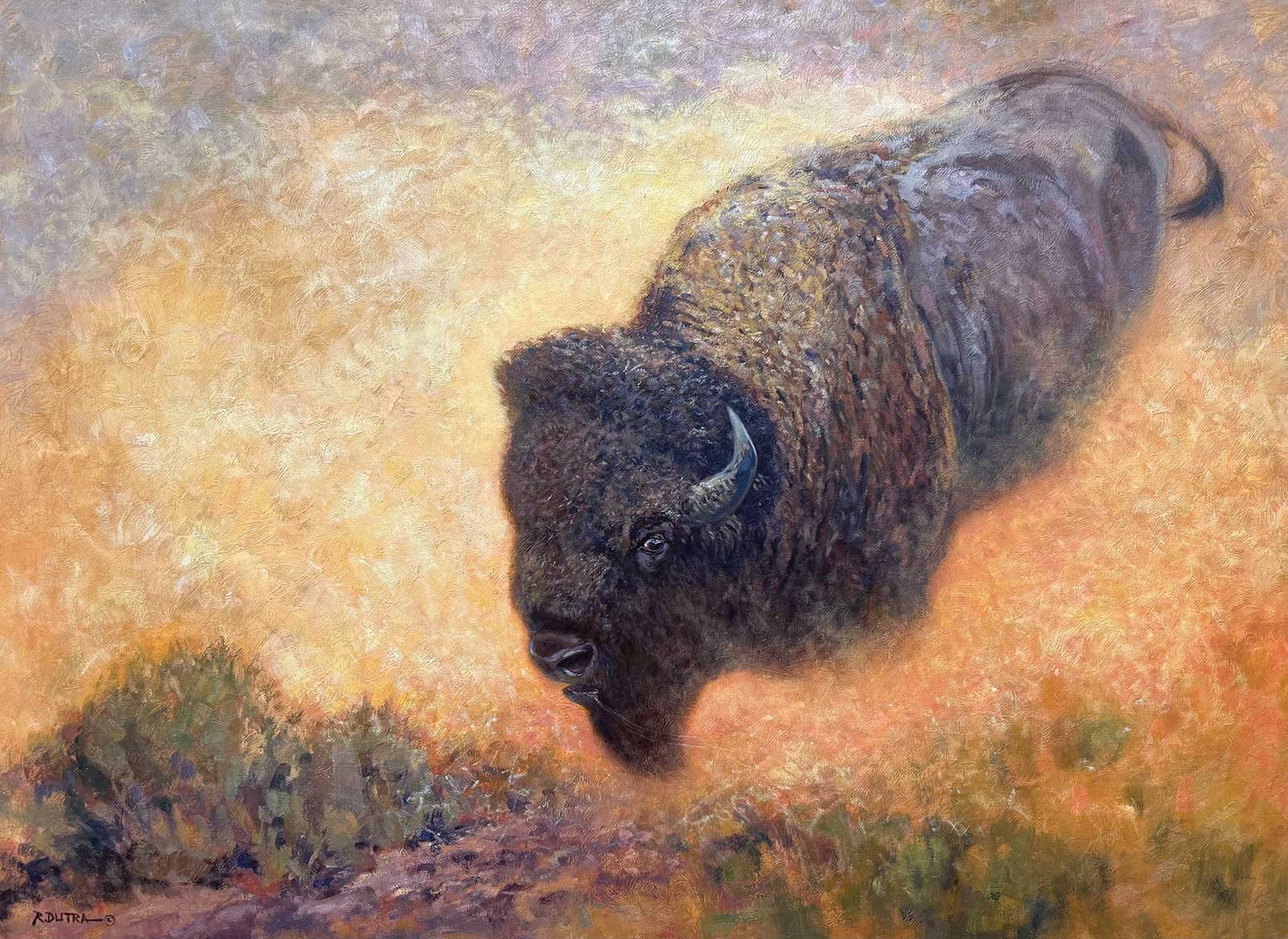
Randal Dutra, Dust Devil – American Bison, oil on Belgian linen, 36 x 50 in.
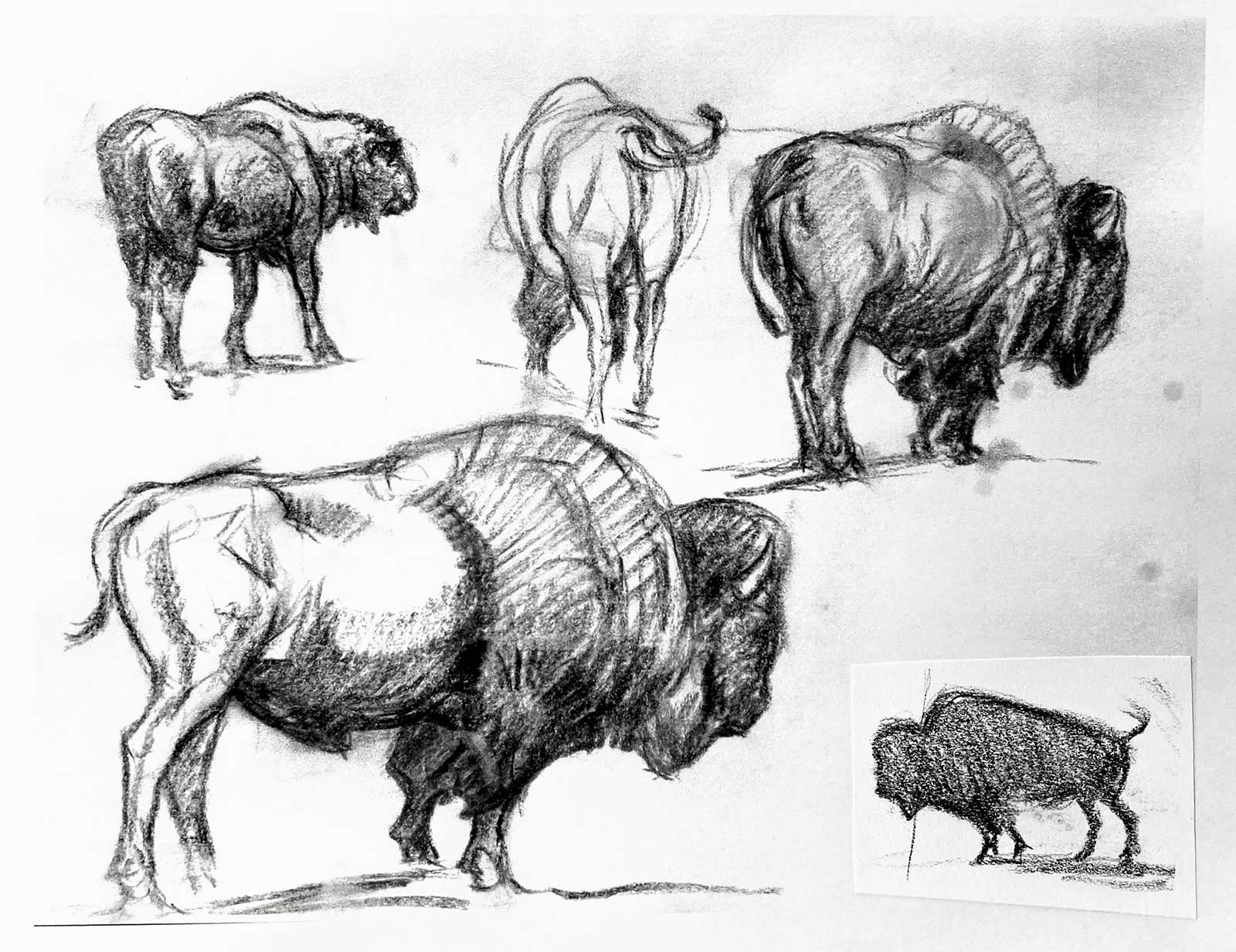
Randal Dutra, bison life drawings, vine charcoal and graphite, 12½ x 16 in.
Dutra also allows himself to have “happy mistakes” on the final canvas, but largely develops the painting before that point. “I have a good idea of what I want and where I’m going in a painting: the impression, the mood. However, I’m certainly open to any spontaneous discoveries along the way. Those are the accidents that keep a painting fresh, fueling a vitality that cannot be forced,” he says. “A painting or sculpture is a personal journey that allows me to arrive at a destination. I’m always balancing, harmonizing and integrating as I proceed—never by formula, which I avoid like the plague.”
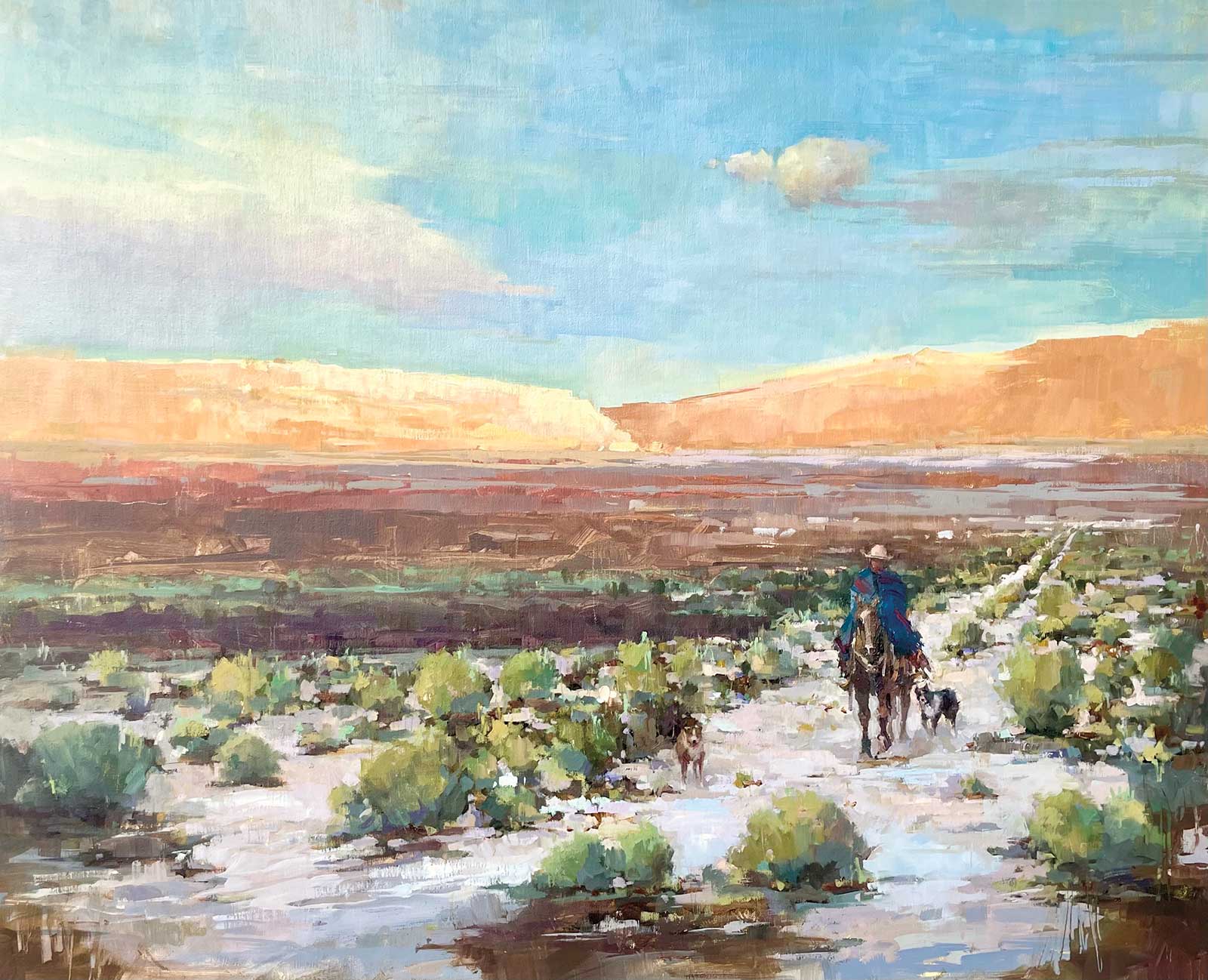
Michele Usibelli, Loyal Companions, oil 30 x 40 in.
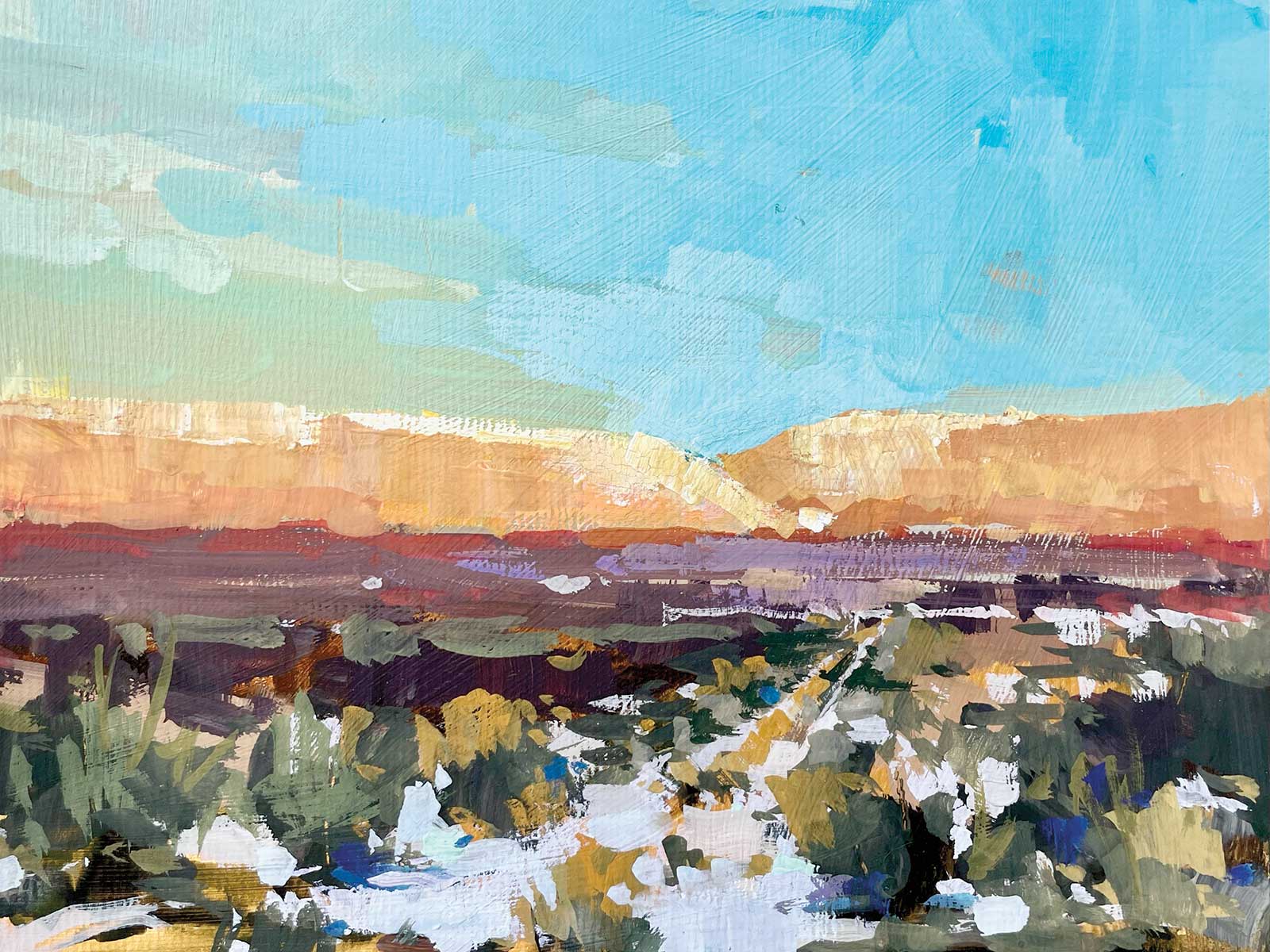
Michele Usibelli, gouache composition and color study, 8 x 10 in.
Prior to becoming a fine artist, Dutra had a long history in visual effects in Hollywood, a famously collaborative field that requires many people and many interlocking departments. These days, Dutra is his own team and his own department, and the work falls back to him, his interests and his process. “My process depends entirely on the subject I am exploring. If it is a landscape, as much as possible I walk the terrain, to feel the terra firma under my feet. If it is an animal or bird—even if it is one I am familiar with— I literally go back to the drawing board of live observation,” he says. “Every creature has its own, unique characteristics beyond their general designation. It is a portrait of that individual. It does not mean tightening up; having that foundational knowledge allows me to loosen up with confidence and make ‘art.’ No matter the subject, it still must be art first, subject matter second.”
Concept to Canvas continues through March 15, 2026. A member opening and lecture will take place on November 8. Register for the event on the museum’s website. —
Concept to Canvas: Six Contemporary Artists
October 25-March 15, 2026
Booth Western Art Museum
501 N. Museum Drive, Cartersville, GA 30120
(770) 387-1300, www.boothmuseum.org
Powered by Froala Editor
